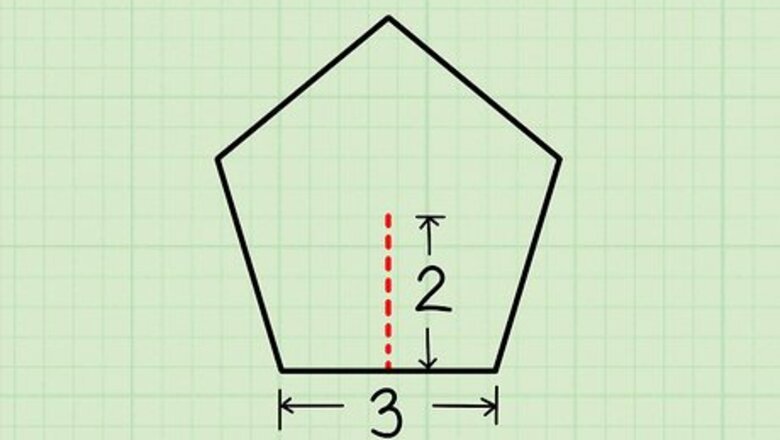
views
Finding the Area from the Side Length and Apothem
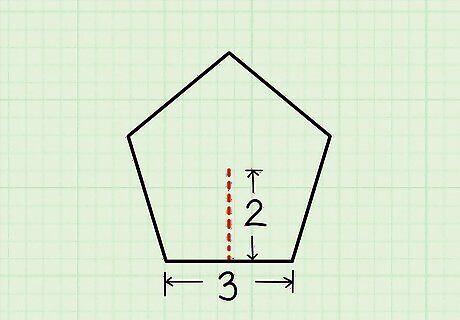
Start with the side length and apothem. This method works for regular pentagons, with five equal sides. Besides the side length, you'll need the "apothem" of the pentagon. The apothem is the line from the center of the pentagon to a side, intersecting the side at a 90º right angle. A regular pentagon can be divided into five triangles. Where the height of the triangle is known as the apothem. Then, using the apothem, the area of a regular pentagon will be ½ x apothem x 5. Don't confuse the apothem with the radius, which touches a corner (vertex) instead of a midpoint. If you only know the side length and radius, skip down to the next method instead. We'll use an example pentagon with side length 3 units and apothem 2 units.
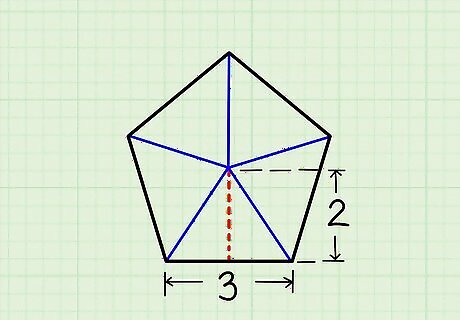
Divide the pentagon into five triangles. Draw five lines from the center of the pentagon, leading to each vertex (corner). You now have five triangles.
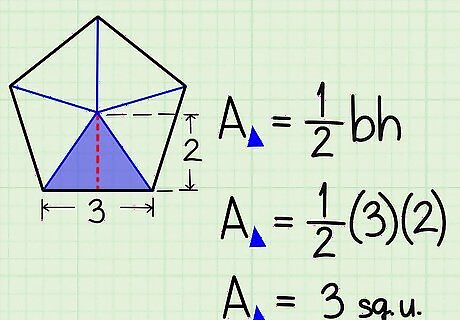
Calculate the area of a triangle. Each triangle has a base equal to the side of the pentagon. It also has a height equal to the pentagon's apothem. (Remember, the height of a triangle runs from a vertex to the opposite side, at a right angle.) To find the area of any triangle, just calculate ½ x base x height. In our example, area of triangle = ½ x 3 x 2 = 3 square units.
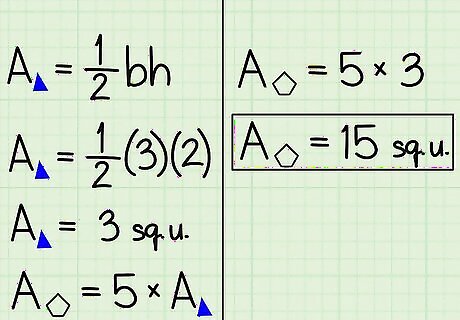
Multiply by five to find the total area. We've divided the pentagon into five equal triangles. To find the total area, just multiply the area of one triangle by five. In our example, A(total pentagon) = 5 x A(triangle) = 5 x 3 = 15 square units.
Finding the Area from the Side Length
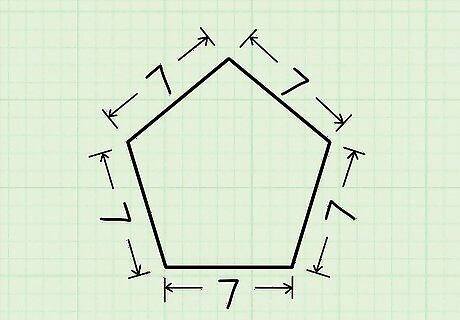
Start with just the side length. This method only works for regular pentagons, which have five sides of equal length. In this example, we'll use a pentagon with side length 7 units.
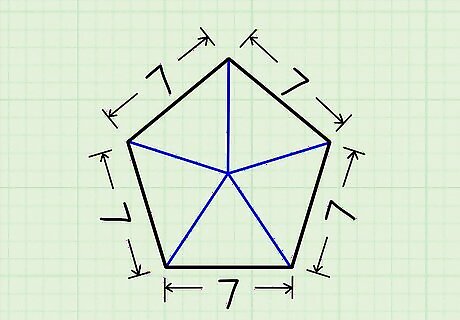
Divide the pentagon into five triangles. Draw a line from the center of the pentagon to any vertex. Repeat this for every vertex. You now have five triangles, each the same size.
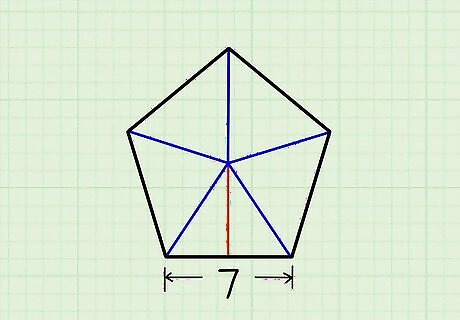
Divide a triangle in half. Draw a line from the center of the pentagon to the base of one triangle. This line should hit the base at a 90º right angle, dividing the triangle into two equal, smaller triangles.
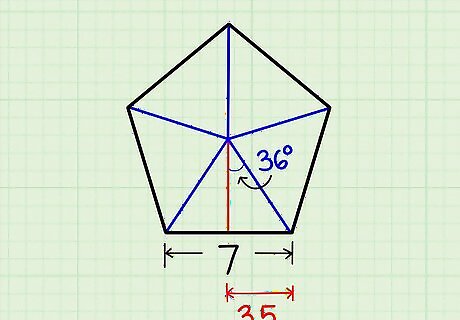
Label one of the smaller triangles. We can already label one sides and one angle of the smaller triangle: The base of the triangle is ½ the side of the pentagon. In our example, this is ½ x 7 = 3.5 units. The angle at the pentagon's center is always 36º. (Starting with a full 360º center, you could divide it into 10 of these smaller triangles. 360 ÷ 10 = 36, so the angle at one triangle is 36º.)
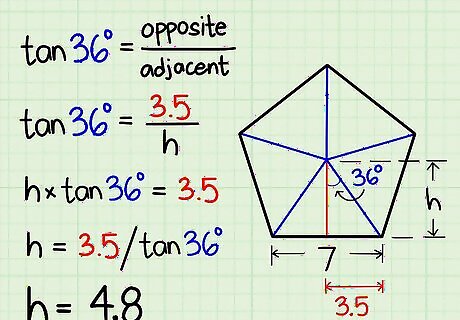
Calculate the height of the triangle. The height of this triangle is the side at right angles to the pentagon's edge, leading to the center. We can use beginning trigonometry to find the length of this side: In a right-angle triangle, the tangent of an angle equals the length of the opposite side, divided by the length of the adjacent side. The side opposite the 36º angle is the base of the triangle (half the pentagon's side). The side adjacent to the 36º angle is the height of the triangle. tan(36º) = opposite / adjacent In our example, tan(36º) = 3.5 / height height x tan(36º) = 3.5 height = 3.5 / tan(36º) height = (about) 4.8 units.
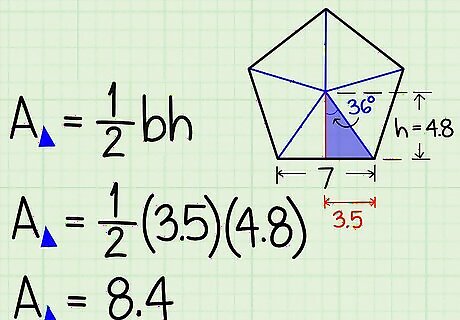
Find the area of the triangle. A triangle's area equals ½ the base x the height. (A = ½bh.) Now that you know the height, plug in these values to find the area of your small triangle. In our example, Area of small triangle = ½bh = ½(3.5)(4.8) = 8.4 square units.
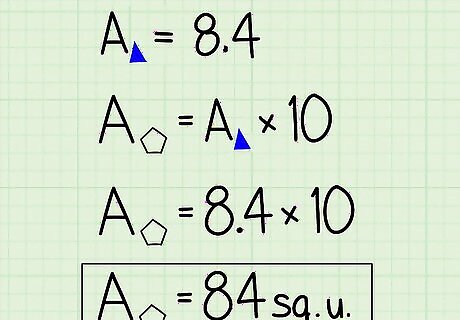
Multiply to find the area of the pentagon. One of these smaller triangles covers 1/10 of the pentagon's area. To find the total area, multiply the area of the smaller triangle by 10. In our example, the area of the whole pentagon = 8.4 x 10 = 84 square units.
Using a Formula
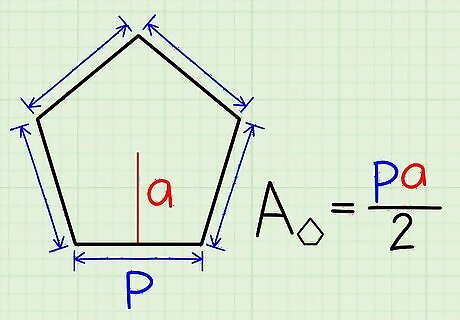
Use the perimeter and apothem. The apothem is a line from the center of a pentagon, that hits a side at a right angle. If you are given its length, you can use this easy formula Area of a regular pentagon = pa/2, where p = the perimeter and a = the apothem. If you don't know the perimeter, calculate it from the side length: p = 5s, where s is the side length.
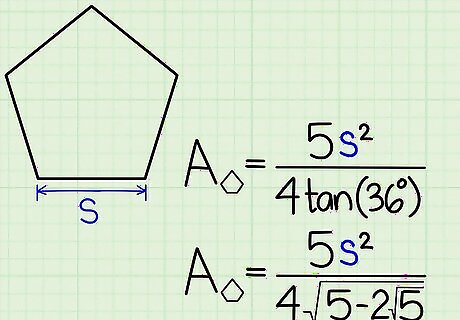
Use the side length. If you only know the side length, use the following formula: Area of a regular pentagon = (5s) / (4tan(36º)), where s = side length. tan(36º) = √(5-2√5). So if your calculator doesn't have a "tan" function, use the formula Area = (5s) / (4√(5-2√5)).
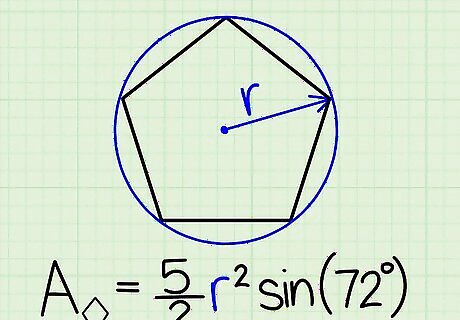
Choose a formula that uses radius only. You can even find the area if you only know the radius. Use this formula: Area of a regular pentagon = (5/2)rsin(72º), where r is the radius.




















Comments
0 comment